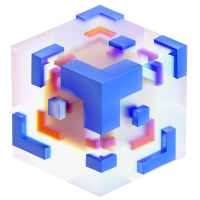A Look at GPU Resources: Powering the AI Engine

June 13, 2024
3 min read

For AI companies and projects, Graphics Processing Units (GPUs) are the essential workhorses. While CPUs handle general computing tasks, GPUs excel at the parallel processing that's crucial for training and running complex AI models. This article dives into the world of GPU resources for AI, exploring what they are, how to leverage them, and where to find the processing power you need.
What are GPU Resources?
“GPU resources” is the term we use to describe deploying GPU as a critical component necessary for AI development. Imagine a highway. A CPU is like a single lane, efficiently handling one task at a time. A GPU, on the other hand, is a multi-lane highway, capable of processing multiple tasks simultaneously. This parallel processing architecture makes GPUs ideal for tasks that can be broken down into smaller, independent steps – precisely what AI model training involves.
See also: Top 5 GPUs for AI in 2024
Harnessing the Power of GPU Resources for AI
To put GPU resources to work for AI, you'll need to utilize specialized software frameworks like CUDA (developed by NVIDIA) or OpenCL that allow your code to interact with the GPU's architecture. These frameworks distribute the workload across the GPU's numerous cores, significantly accelerating training times.
Finding the Right Fit: Where to Get GPU Resources
There are several ways to obtain the GPU resources your AI project needs:
- Building In-House Infrastructure: This offers maximum control but requires significant upfront investment in hardware and expertise for maintenance.
- Cloud Computing Platforms: Cloud providers like Google Cloud Platform (GCP), Amazon Web Services (AWS), and Microsoft Azure offer access to a vast pool of GPUs with pay-as-you-go pricing. This is a popular option for its flexibility and scalability.
- Specialized AI Cloud Services: Several companies offer cloud-based platforms specifically designed for AI development, often pre-configured with popular frameworks and optimized for machine learning workloads.
- Decentralized GPU Marketplaces: Emerging solutions allow you to tap into a network of individual GPUs, offering a more cost-effective option for smaller projects.
Read more on The Future AI Stack
Beyond the Basics: Important Considerations about GPU Resources
- GPU Type: Different GPUs cater to specific needs. NVIDIA dominates the AI space, but AMD offers competitive options as well. Consider factors like memory size and processing power based on your project's requirements.
- Cost Optimization: Techniques like model quantization and gradient accumulation can help reduce the computational workload, leading to lower GPU resource consumption and cost savings.
- Future-Proofing: As AI models grow in complexity, ensure your chosen platform can scale to meet your evolving needs.
Final Thoughts
By understanding GPU resources and how to leverage them effectively, AI companies and projects can unlock the true potential of their machine learning models. From cloud-based solutions to in-house infrastructure, there's a path to secure the processing power you need to bring your AI vision to life.
Join the Conversation on Ankr’s Channels!
Twitter | Telegram | Discord | YouTube | LinkedIn | Instagram | Reddit | All Links



